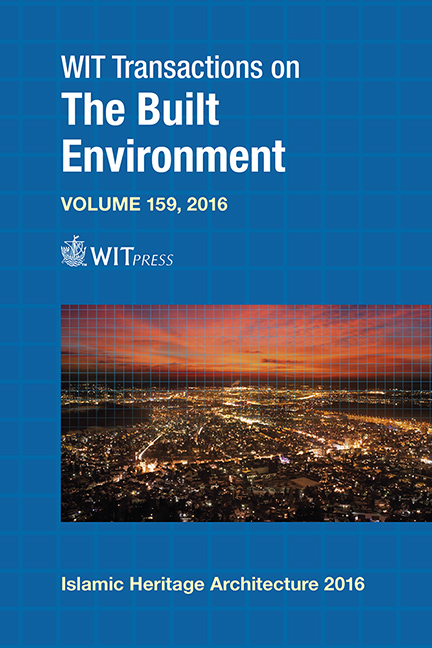Execution Of Contemporary Islamic Architecture Through Design: The Cyberjaya Green Platinum Mosque Project In Malaysia
Price
Free (open access)
Transaction
Volume
159
Pages
12
Page Range
11 - 22
Published
2016
Size
869 kb
Paper DOI
10.2495/IHA160021
Copyright
WIT Press
Author(s)
A. A. Aziz
Abstract
This paper discusses an urgent need for architects to take an alternative direction when designing mosques in order for mosque buildings to be sustainable and progressive in their architectural expression. It is also a review of the continuous evolution of mosque architecture in Malaysia and the region that has been using and mixing architectural references from various past Islamic architectural elements or language. In an effort to promote a more modern approach in designing many future mosques, various suggestions are still being introduced using unnecessary elaborate embellishments commonly used to grandly express the mosque. At the same time, the design has to meet the need to project an Islamic image, by incorporating some Islamic and traditional elements into the design of the mosque. The borrowed architectural styles and the architectural language or nomenclature have been used regularly over a long period of time, reaching a point where they need to be evaluated. It has come to a point where there is now an urgent need to redefine this approach of designing the mosque by taking into account past values, the surrounding environment and future expectations. The expression need not be repeated or follow traditional mosque designs as it has become stagnated with no significant architectural value. The sustainable approach to future mosque design, like the Cyberjaya Mosque in Malaysia, is used as a case study in this paper, and argues that there is now a need for more efforts to pursue this direction to be in style with the ever changing times to ensure that Islamic architecture is still relevant.
Keywords
energy efficient, green design, mosque architecture, progressive, sustainable




